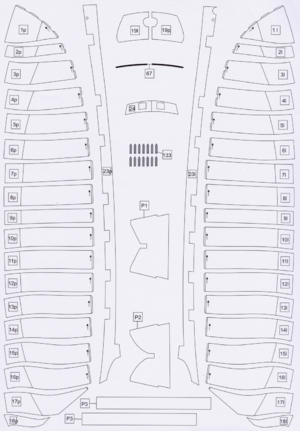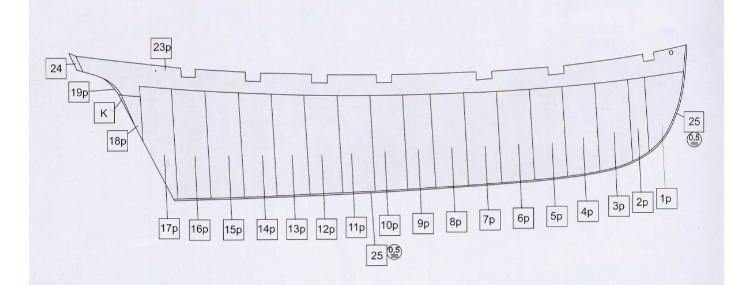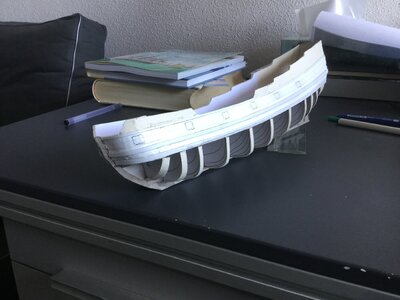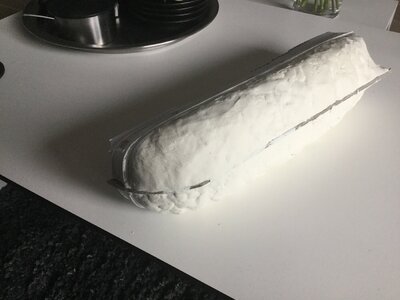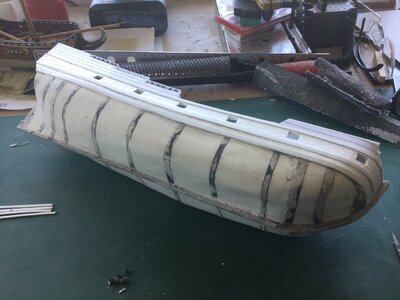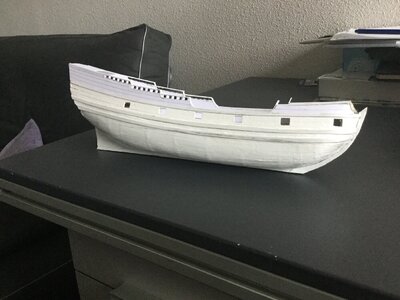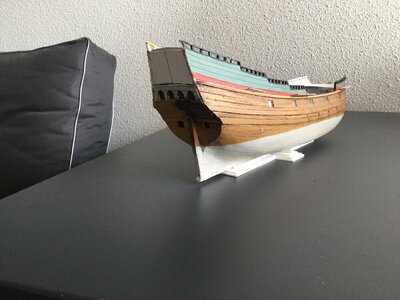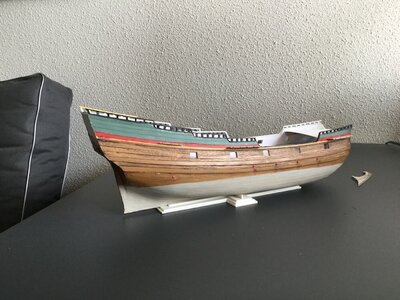As I have glued together more than 20 cardboard sailing ships, maybe my observations will also be helpful.
1) As Jimsky rightly pointed out, paper and wood are two different materials and many stages are different. Working with cardboard itself requires much less force than working with wood, everything should be shaped as precisely as possible, and the glue only serves to prevent the part from falling off

)
2) The laser cut frames do not require sanding amidships, but sharper curves appear at the bow and stern and something like the following may appear at these points (I mean the first layer, shown by Jimsky).
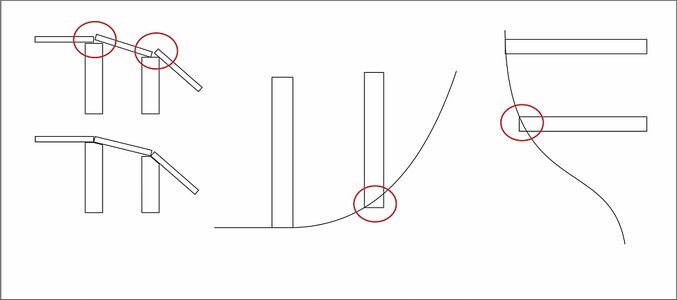
The marked places do not need to be fairing in any special way, but in my opinion you need to smooth, slightly round these protruding corners. All sanding takes a few strokes with sandpaper - I use 220 grit.
In the photo below you can see clearly that you can sand cardboard frames, especially if there are sharp curves and bevels.
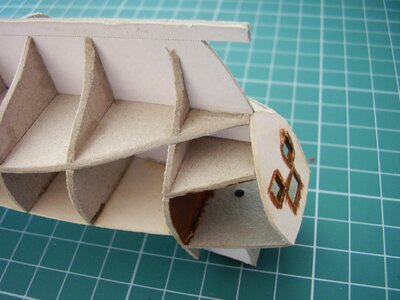
3) Soaking the edges with CA glue makes them very hard and fairing them ... much more difficult. If you soak it unevenly, the edge will still be hard in some places and soft in others, deforming the shape rather than smoothing and evening out.
4) You will certainly have some pieces of spare cardboard in the kit, so it is a good rule to test and try on something that can be damaged, rather than directly on the model. Check if this cardboard can be sanded, how much force you need to use, which sandpaper will be the best, etc.
Greetings
Tomek




